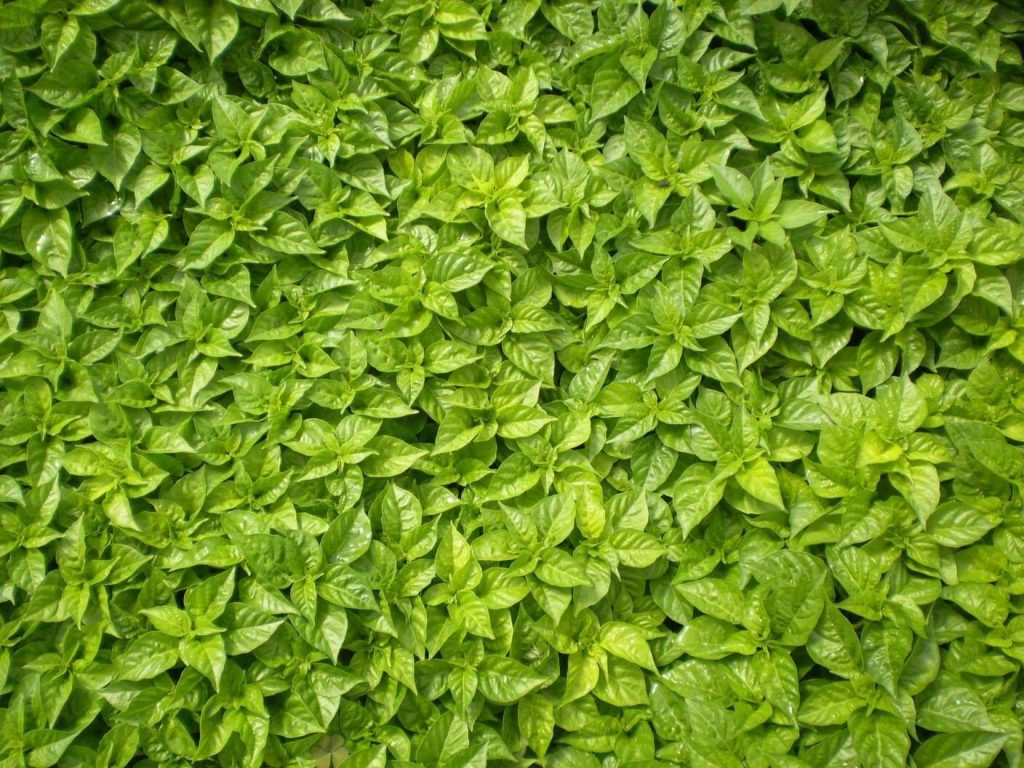
Goethe and Botanics
Throughout history, many famous and not-so-famous people have become amateur botanists. Unfortunately, the field treated them as dilettantes, and society often saw them as peculiar „bug enthusiasts.” A century or two ago, they were viewed as practical resources and asked to identify the names of plants, whether they were for the kitchen garden or ornamental purposes. How should I explain it? They were able to spread their knowledge like an entertaining guidebook. They also made many interesting observations along the way.
One of my friends suggested that I learn a couple of plant Latin names so I can „flash” them in front of my neighbors. It’s much more elegant to say, „This is Raphanus sativus!” instead of saying, „This is a radish!”
It is not widely known that even Goethe was an amateur botanist. He developed a „metamorphosis theory” that states „the plant, despite all its complexity, has a very simple structure, in that it always develops the same organ, the leaf, on the stem above the ground. The leaf is the essence of the plant.”
Briefly: as the seed grows into a rootlet, it immediately sprouts a leaf, then produces successive sets of foliage leaves on the stem, which later form the plant’s canopy. The first primitive form is always repeated: the leaf. Even flowers are modified leaves. Sepals are leaves, and even petals can be so heavily modified as to be unrecognizable as leaves. Essentially, they are all true foliage leaves.
Indeed, if we further examine the flower, the stamen is also a modified leaf.
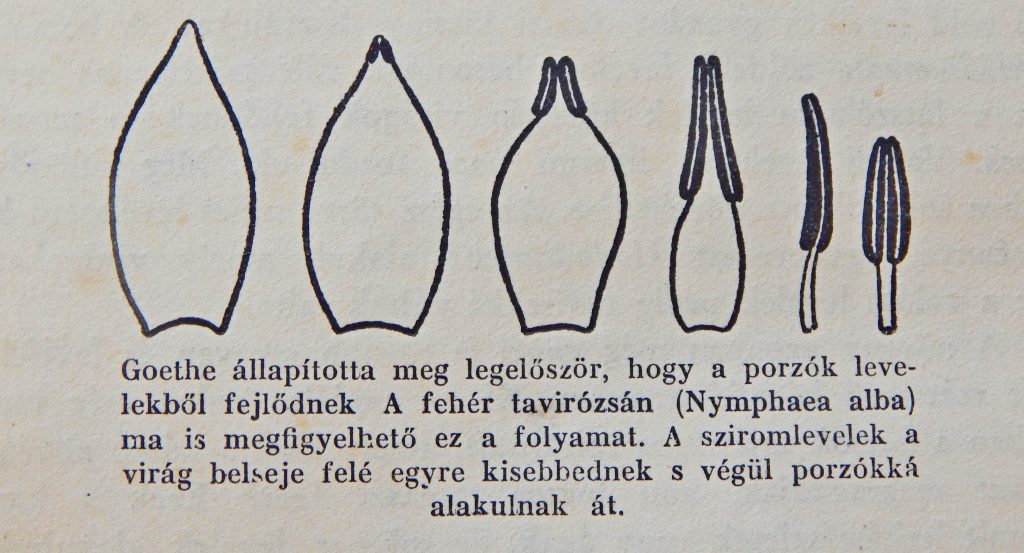
…and the fruit? It is merely a structure composed of leaves, specialized leaves called fruiting structures (in the case of angiosperms).
Modified leaves also include spines and thorns.
We’ve jumped ahead a bit!
Let’s see what we know about the leaf!
The leaf (folium) is a part of the shoot, a different, mostly flat, plate-like lateral structure of it.
Characteristics:
- Its growth is limited and after it develops, it is unable to continue growing. (There are exceptions, but this statement holds for chili peppers.)
- It is regularly located along the axis of the shoot (stem). (I will write more about this below.)
- It does not develop any additional organs itself.
- It cannot be created secondarily on older body parts; it forms at the same time as growth, at the apex of the shoot or the apical meristem.
- The development of its tissues is closely related to the tissues of the stem it carries and some of its tissue layers are homologous to the corresponding layers of the stem. (Agricultural botany)
Types:
Seed leaves or cotyledons, scale leaves (kataphyllum)
foliage leaves (nomophillum, folium), primary leaves (hypsphyllum)
bracts (bractea)
glumes (gluma)
bracteoles or floral prophylls (squama involucri)
spathe or floral envelope (spatha) (e.g., corn husk)
and bud scales or cupules (cupula)
From this list, I will only discuss the seed leaf and the foliage leaf, as the others are either not present in chili plants or will be discussed in other writings.
The cotyledon leaf

During germination, the plant first shows its cotyledon leaves, and then as it develops, it brings forth its true leaves, which are characterized by their shape and color specific to the species or variety.
In my previous writings, I have already discussed that the first leaves or leaf primordia of the germinating plant usually develop inside the seed. In the case of peppers, their shape is not very diverse. Their edges are smooth and undivided. They are also above ground because there are cotyledon leaves underground as well, but let’s focus on the chili now!
„Don’t take away the sick person’s favorite obsession, as they might get a worse one in its place! – Dr. Bubó”
The foliage leaf
The pepper plant has fully developed and complete foliage leaves consisting of three parts: leaf base, leaf stalk, and leaf blade.

Leaf base
The leaf emerges from the nodes of the stem and is attached to it. This slightly thickened part is called the leaf base. It has no appendages.
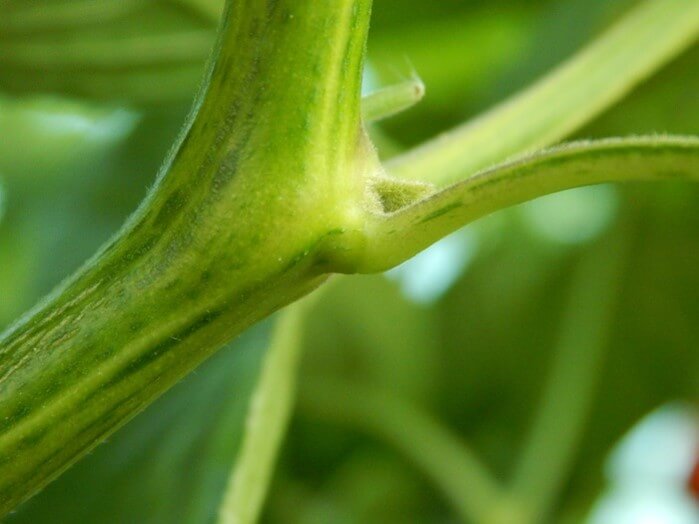
Leaf petiole
The leaf petiole connects the leaf blade to the leaf base. It supports the leaf and tries to position it in the most suitable position for vital biological processes in the leaf blade. In fulfilling this task, it is capable of elongating, bending, deflecting, or even twisting! Yes, it moves, performing small, slow movements that seem to be conscious, depending on environmental factors! Therefore, its length may vary slightly, but its cross-section is characteristic.
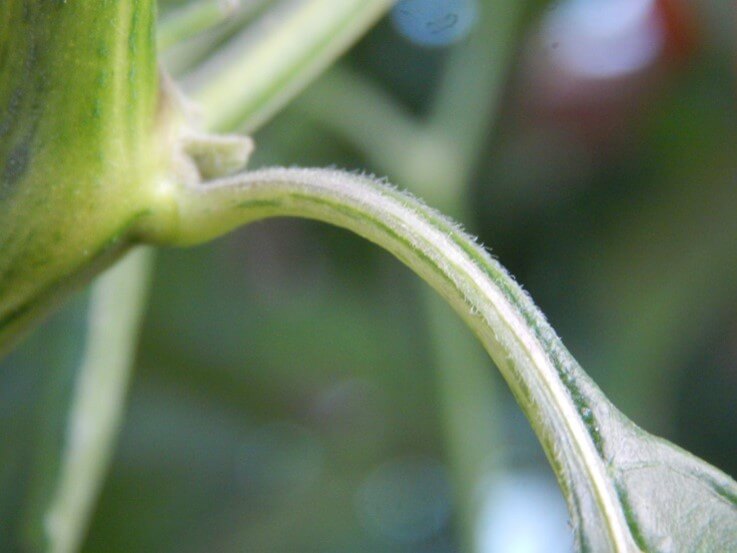
The leafstalk of our peppers is semi-cylindrical, with three longitudinal, smaller, semi-cylindrical ridges on the upper, non-cylindrical side.

How amazing our nature is!
If we examine the structure of the leaf stalk more closely, we can see that there is a durable structure made of half-circular, slightly serrated, harder fibers inside the tissue. It is an open half-tube, a „C” profile.
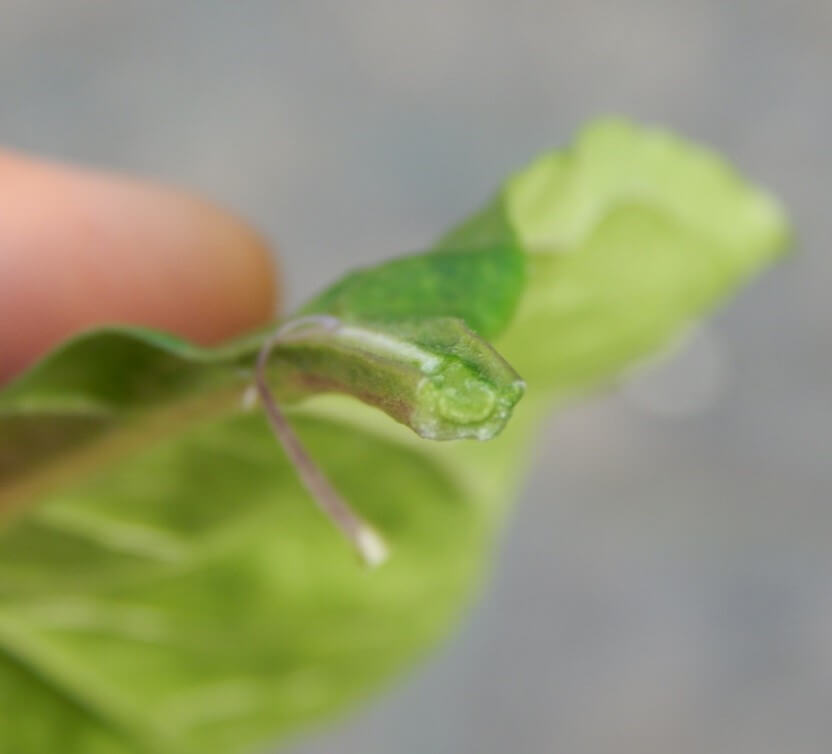
Open sections are much more flexible in absorbing emerging forces without any remaining deformation, in our case, torsion or bending caused by the wind than closed sections of the same mass. (For example, the chassis of trucks are made with open sections, among other reasons, for this purpose. Those who don’t believe it can check it out.) The static model that has formed is ideal for basic use, since in the resting state, the bending load acting downward on the leaf blade towards the leaf stalk is a constant load, which is met by the „C” profile oriented upward with its stem. Open sections are much more flexible in absorbing emerging forces without any remaining deformation, in our case, torsion or bending caused by the wind than closed sections of the same mass. (For example, the chassis of trucks are made with open sections, among other reasons, for this purpose. Those who don’t believe it can check it out.) The static model that has formed is ideal for basic use, since during the resting state, the bending load acting downward on the leaf blade towards the leaf stalk is a constant load, which is excellently met by the „C” profile oriented upward with its stem.
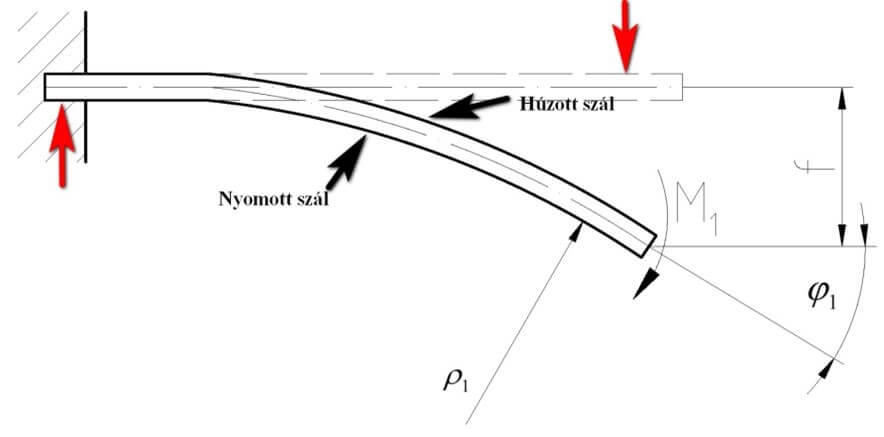

The part of the plant where the leaf attaches slightly thickens, while on the side towards the leaf blade, a slightly thinning leaf stalk is formed, which a knowledgeable statician would say was designed by the Lord to be equally strong. It is the most efficient and economical implementation. Excuse the digression, but if we were to take this plant apart, we would see that every element is perfect for its function!
The leaf blade
The leaf blade is undivided and has a flat, plate-like shape typical of foliage leaves, with a smooth texture when touched. Different shades of green can be observed depending on the species.

The perimeter of the leaf blade is the edge of the leaf, which is bordered by the margin of the leaf. As we can see, the edge of the leaf is smooth, not jagged, serrated, lobed, or possibly wavy.

The shoulder of the leaf blade is asymmetric and narrows towards the stem.

The tip of the leaf blade is pointed and sharp.

ött.
The main vein on the underside of the leaf is surrounded by a slightly hairy area.

Leaf arrangement
In terms of leaf arrangement (based on their position on the stem), our peppers have alternate, spiral leaf arrangement.
They produce one leaf per node (joint on the stem). At first glance, the leaves appear to be randomly arranged, but in reality, we can discover a very interesting pattern in them! If we examine the point of origin of the leaves and connect them with a line, we get a spiral.
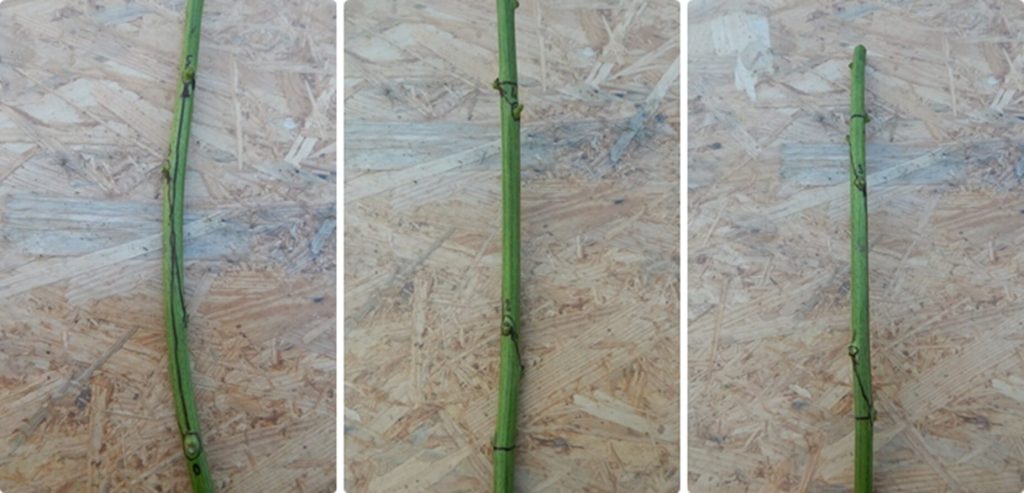
We can choose the starting point arbitrarily, and the endpoint will be the first node that aligns with the line drawn (as seen in the left image). Moving upward between the selected points in a clockwise direction, the leaves are arranged spirally. As we can see, to follow the spiral from the starting point to the endpoint, we need to make two turns around the stem. During each turn, we encounter five leaves.
This leaf arrangement is regular and characteristic! It is usually described as a fraction, where the numerator represents the number of turns and the denominator represents the number of leaves per turn until the starting and endpoint are in the same plane. In our case, this ratio is 2/5 (two turns/five leaves).
The angle between adjacent leaves, known as the divergence angle, is approximately 144°. This pattern applies to all Capsicum chinense peppers.
Photosynthesis
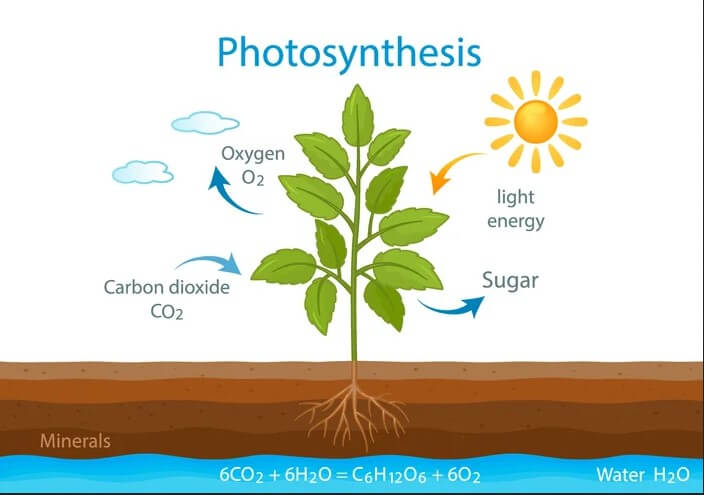
Photosynthesis, simplified, is the fundamental process of plant life in which glucose molecules (or other sugars) are built from water and carbon dioxide, and oxygen is released as a byproduct, in response to sunlight. The chlorophyll compound found in the leaves absorbs the energy of sunlight and mediates the synthetic processes occurring within the cell.

Although children learn about it in the lower grades of elementary school, photosynthesis is actually a highly complex biochemical process that cannot be overestimated! We owe the oxygen-based life on Earth, for example, to photosynthesis. Clearly, it deserves greater appreciation and attention!
Therefore, the sugars produced during photosynthesis are vital resources for the plant. During this process, carbon is incorporated into the plant’s organism from the atmospheric carbon dioxide, and a portion of the oxygen is released back into the environment through respiration.
Plants are essentially carbon reservoirs! The oil and coal reserves found on Earth would not have been created without photosynthesis!
Leaf Orientation
Photosynthesis primarily occurs in the leaves of plants. The higher the radiation, the more efficient the photosynthesis. The amount of radiation received depends on the orientation of the leaf. As mentioned earlier, the plant can adjust the orientation of the leaves to some extent, but a change in leaf orientation can also be observed. The upper leaves of the foliage are generally more upward-facing, while the lower leaves are much less so.
In the case of larger foliage, some plants develop „sun leaves” and „shade leaves,” logically based on their position. Sun leaves have better photochemical electron transport capacity, more stomata, a better respiratory ratio, and a number of other parameters that are completely unknown to me. Therefore, there is a kind of „evolutionary practicality” observable in plants. Which, in my opinion, is fantastic!
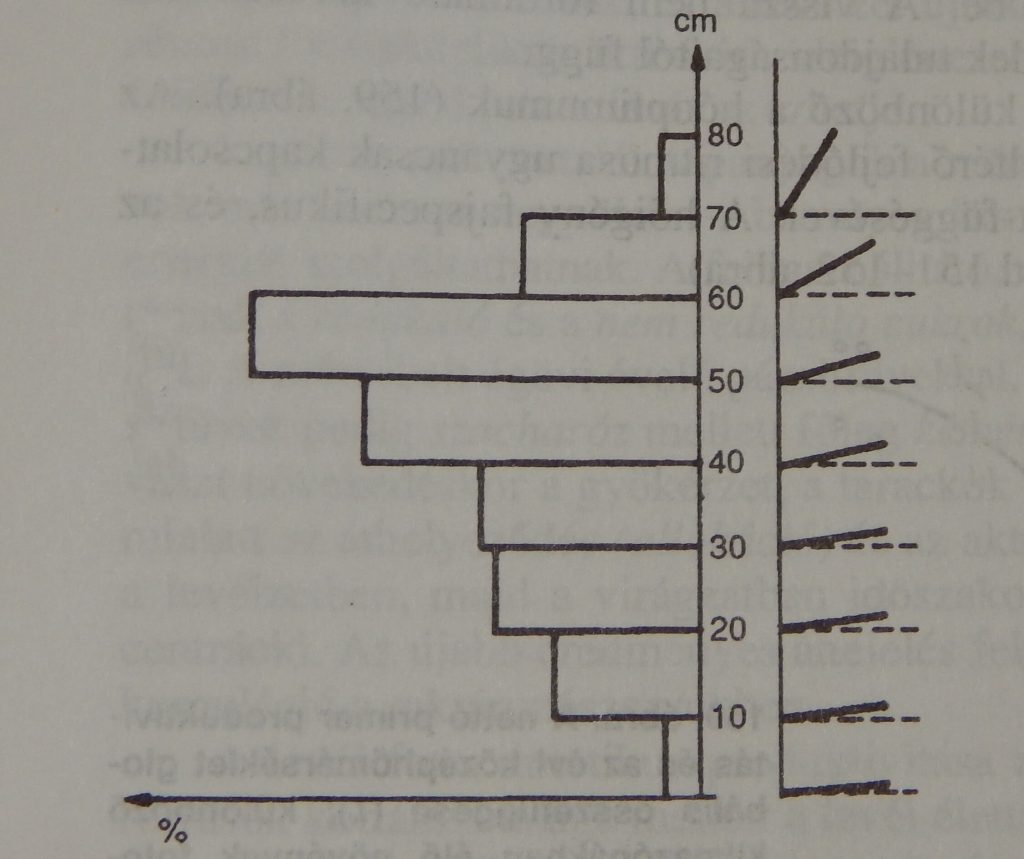
Leaf fertilization
I’ve realized earlier that it doesn’t make much sense for me to fertilize the leaves because I can only apply a small amount of nutrients to the plant, which is not proportional to the effort and energy invested. We can apply much larger amounts of nutrients with irrigation water. My mentor, T. Pali, confirmed this a few years ago. He said: Leaf fertilization is actually useful for the gardener because it reassures them that they’ve done everything. It is completely unnecessary to apply additional nutrients to the plant through this method in the case of macronutrients, perhaps (perhaps!) micronutrients can be tried with little and temporary results.
But how do the nutrients on the leaves get into the plant’s system?
But how do the nutrients on the leaves get into the plant’s system?
Through a special, active, energy-consuming transport method! The solid particles or liquid droplets on the leaf membrane are surrounded by the membrane and engulfed into the cell plasma! (endocytosis)
The same thing happens outward, meaning the waste generated within the cell is essentially excreted out to the external environment! (exocytosis)
This is also fantastic!
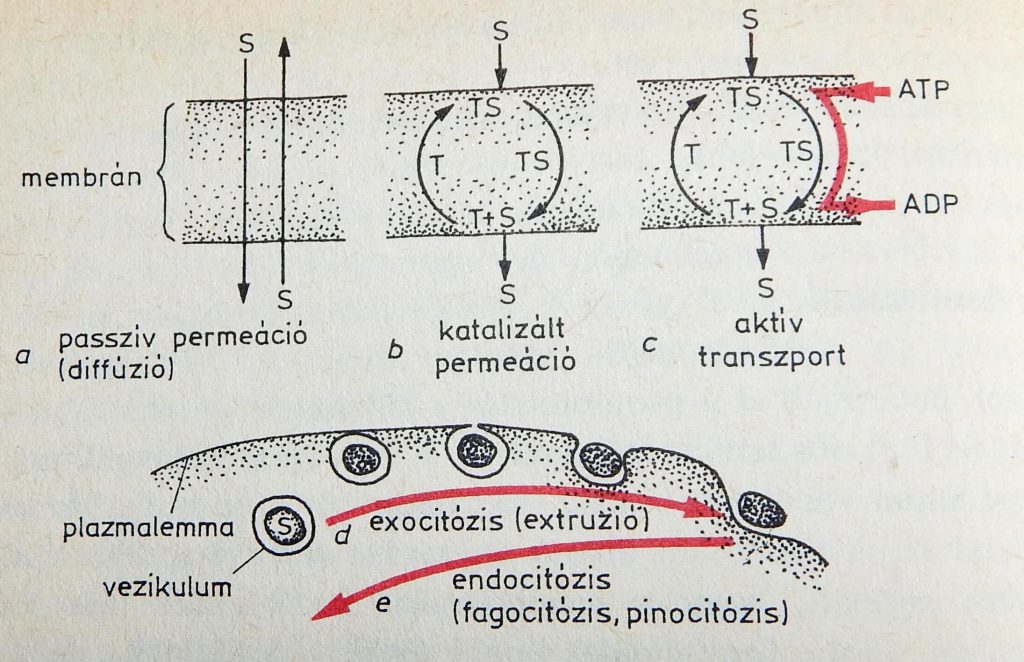
There is still passive membrane transport, but there are many conditions that must be met before the substance can diffuse through. Active transport is much more exciting!
No matter how superficially we delve into the topic of leaves, there are so many interesting and surprising phenomena that I often wonder if everything that has spontaneously evolved is just a coincidence. I don’t know.
The leaf as an indicator
We can infer various nutrient supply disorders, fungal and bacterial infections, and even viral infections from changes in the leaf blade. Knowing these signs is important for a grower.
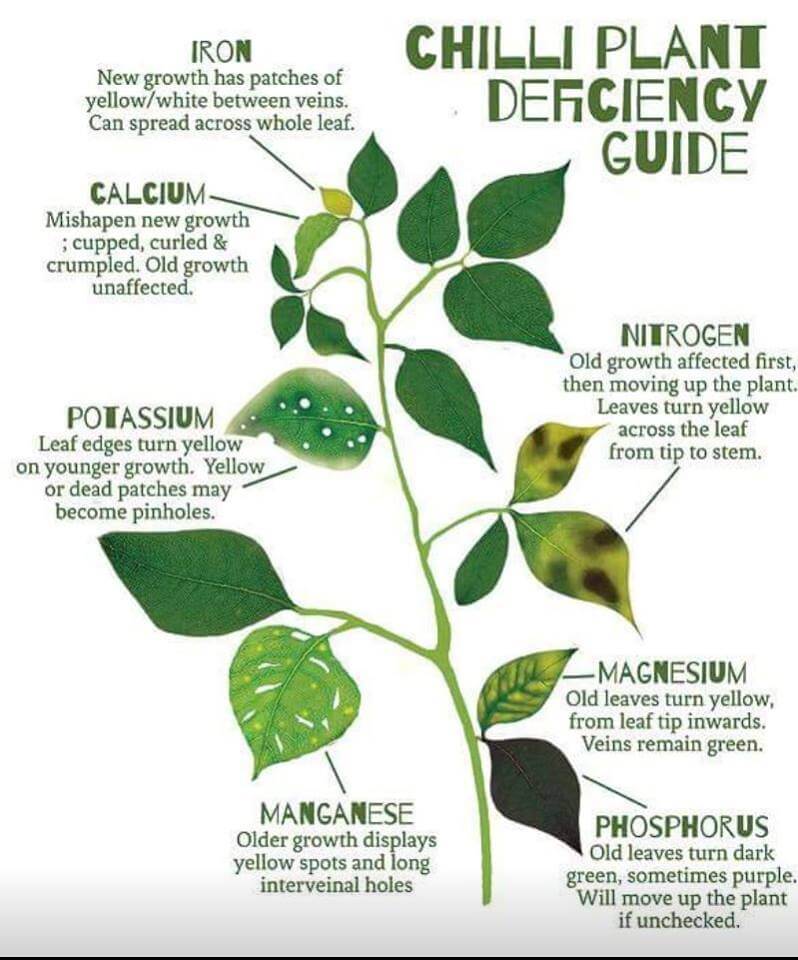
The deficiencies causing the leaf changes can be read from the image, but I wouldn’t list them all. Instead, I would like to say a few words about the fact that when we see these symptoms, we may not necessarily be talking about a real nutrient deficiency! There may be some physiological reason why, for example, the stem and leaves of the plant turn purple. In the basic case, we would say: phosphorus deficiency, as this will result in purple anthocyanin pigmentation on the plant, even though there may be plenty of phosphorus in the soil, but the plant cannot take it up because it requires at least +15 degrees Celsius! Below that (in cool weather), it cannot. So we’re not talking about a real phosphorus deficiency, but a deficiency caused by external circumstances.
Ion antagonism
It is also common that – although we mean well – we mix nutrients up haphazardly. This is not correct! Certain substances inhibit the uptake of other substances! This is called ion antagonism. In the image below, you can see which substances to pay attention to when applying them. Of course, there are already products that partly solve the problem, but for example, we should always apply calcium separately. With single-nutrient fertilizers, we can make a big mistake if we do not take this into account!
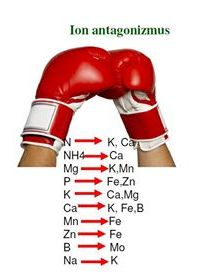
The letter occasionally distorts. It curves upwards or downwards. Upward curvature could indicate potassium poisoning, while downward curvature (if there are no aphids on it) could be caused by some bad physiological condition.
The key is to make a change! Let’s change the conditions, the technology, … let’s do something!
Therefore, let’s always be thorough in making a diagnosis, let’s not immediately rush for a pesticide or fertilizer!

You see, even though we only touch on every topic superficially, the writing is starting to get very long!
Whoever has made it this far in the reading should eat a chili leaf!
Yes! The leaf of a chili plant is edible!
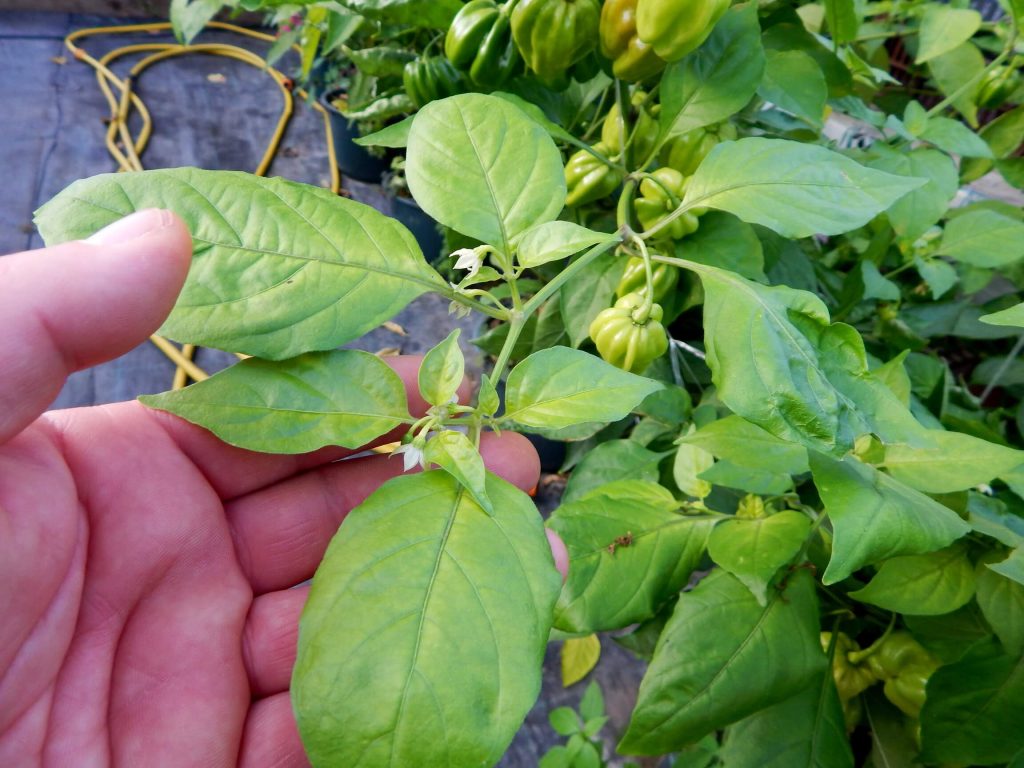
I know, you can eat the leaves of almost anything, but you can do it in this case without consequences! Furthermore, chili leaves are available all year round in markets in the Far East.
There are kitchens where the green curry paste is colored with chili leaves, but they are also a real delicacy when cooked with garlic!
Here is a recipe:
Garlic Chili Leaves
Preparation time: 5 minutes Cooking time: 5 minutes
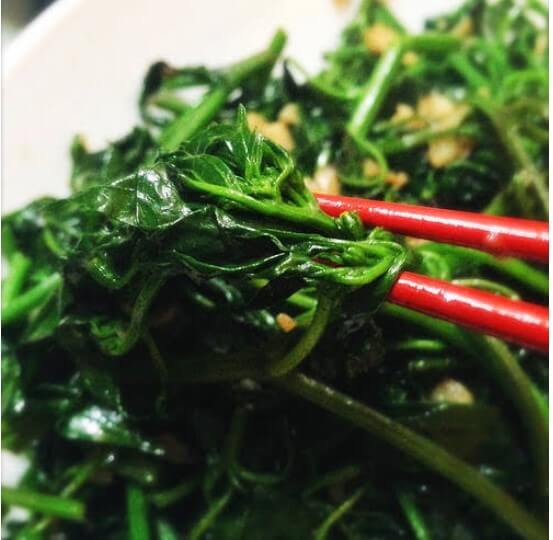
Ingredients:
14 ounces chili leaves (400 g)
3 tablespoons oil
5 cloves garlic
1 tablespoon fresh chili (optional)
1/4 teaspoon sugar
salt to taste
Preparation:
We wash the chili leaves thoroughly and let them drain. We can also add fresh sprouts.
Crush two cloves of garlic. Roughly chop the rest of the garlic cloves. If using chili, slice it.
Heat the wok over high heat, add the oil, then the two crushed garlic cloves and the chili (if using). Stir-fry for a few seconds until the garlic aroma is released. Add all the vegetables at once.
Add 1/2 teaspoon salt, sugar, and stir-fry until the vegetables are slightly wilted. Add the chopped garlic, mix, and cover.
Cook over low heat for 1-2 minutes or until the vegetables are completely wilted and the garlic is soft. Salt to taste. Serve hot.
You may not always have fresh chili leaves, but you can take care of your winter spices in the summer by collecting any amount of fresh leaves, drying them, and crushing them coarsely.

All in all, when we see a chili plant, it seems so obvious that it has leaves, it exists there and
in the way we see it, …our attention mostly focuses on its fruit only. This is also a complex system, without leaves there is no plant, but there is no life in the strict sense without them!
Thank you for reading!







